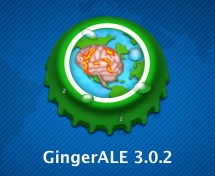External Assessment
Accuracy: The condition or quality of being true, correct or exact.
Adult Hyperactivity Interview (AHI): A modification of the Adult Personality Functioning Assessment, in which a scale of inattentive/restless behaviors was included.
Age: The length of time during which a being or thing has existed.
Anhedonia Scores: Scores to assess the disorder associated with a reduced capacity for pleasure
Autism Diagnostic Interview-Revised (ADI-R): A standardized interview used to diagnose autism and distinguish it from other developmental disorders.
Autism Diagnostic Observation Schedule (ADOS): An instrument for diagnosing and assessing autism.
Barratt Impulsiveness Scale (BIS): Barratt Impulsiveness Scale (BIS)
Beck Anxiety Inventory (BAI)/Beck Anxiety Inventory-Trait (BAIT): This scale is a self-report measure of anxiety.
Beck Depression Inventory (BDI/BDI-1A/BDI-II): A 21-item, self-report rating inventory that measures characteristic attitudes and symptoms of depression.
Behavioral Data: Information produced as a result of actions, typically behavior using a range of devices.
Binge Eating Scale (BES): Binge Eating Scale (BES)
Bladder Fluid Volume: The volume of urine in the bladder.
Blood Pressure: The pressure of the blood against the inner walls of the blood vessels.
Body Mass Index (BMI): Body Mass Index - an index for assessing overweight and underweight.
California Child Q-Sort: A modified version of the California Child Q-set (CCQ) for the assessment of children's social and emotional adjustment that are primarily concerned with behavior problems and dimensions
Cambridge Face Memory Test (CFMT): A test designed to assess whether or not people have face recognition difficulties.
Childhood Trauma Questionnaire (CTQ): A brief survey of six early traumatic experiences (death, divorce, violence, sexual abuse, illness or other), and asseses individual's understanding of their childhood trauma.
Clinical Evaluation of Language Fundamentals (CELF-3): Assesses aspects of language necessary for preschool children to meet the language demands of the classroom.
Clinician Administered PTSD Scale (CAPS): A 30-item structured interview that corresponds to the DSM-5 criteria for PTSD.
Differential Negativity: the negative difference wave (ERP waveform) associated with task switching; late switch-related negativity
Differential Positivity: the positive difference wave (ERP waveform) associated with task switching
Disease Symptom Assessment: A self-report from patients at specific stages of specific disease type.
Dissociation Experiences Scale (DES): A questionnaire consisting of twenty‐eight questions about experiences that you may have in your daily life.
Eating Disorder Examination Questionnaire (EDE-Q): Eating Disorder Examination Questionnaire (EDE-Q)
Education: Number of years of formal school.
Electrocardiogram (ECG): The graphic record produced by an electrocardiograph.
Electrodermal Activity (EDA) (galvanic skin response/electrodermal response/psychogalvanic reflex/skin conductance): Refers to the variation of the electrical properties of the skin in response to sweat secretion.
Electroencephalogram (EEG): The graphic record produced by an electroencephalograph.
Electromyography (EMG): A technique for recording the electrical activity of muscles.
Electrooculography (EOG): The study and interpretation of electroencephalograms made by moving the eyes a constant distance between two fixed points.
Emotional Modulation: Changing the input-output relation between one of the (cognitive level) emotion components and subsequent (cognitive) component(s) in the process.
Emotional Recognition Accuracy: Recognition of emotional facial expressions.
Empathy Quotient (EQ): A questionnaire designed to measure empathy in adults.
Entorhinal Cortex Thickness: Hemispherically rightward-asymmetric with no gender differences.
Error rate: The frequency of errors occurred, defined as “the ratio of total number of data units in error to the total number of data units transmitted."
Familiarity: Close acquaintance with or knowledge of something
Free Association Values: The uncensored expression of the ideas, impressions, etc., passing through the mind of the analysand.
Frequency: The rate at which something occurs or is repeated over a particular period of time or in a given sample.
Fundamental Power Quotient (FPQ): Fundamental power divided by its standard error.
Gaze Duration: The sum of all fixations on a word prior to moving to another word.
Genotype: The genetic makeup of an organism or group of organisms with reference to a single trait, set of traits, or an entire complex of traits.
Ghrelin Levels: Measurement of a peptide hormone, produced mostly in the stomach, that increases appetite by stimulating the pituitary gland to secrete growth hormone.
Glasgow Coma Scale (GCS): A scoring system used to describe the level of consciousness in a person following a traumatic brain injury.
Grip Force: The force applied by the hand to pull on or suspend from objects and is a specific part of hand strength.
Hamilton Rating Scale for Depression (HRSD): Assessment used to quantify the severity of symptoms of depression.
Hare Psychopathy Checklist-Revised (PCL-R): A standard scale used to measure potential psychopathy in adults.
Heart Rate: The number of heartbeats per minute.
Hormone Levels: The measurement of a particular hormone in your blood, urine, or saliva.
Hospital Anxiety and Depression Scale (HADS): Measures anxiety and depression in a general medical population of patients.
Iowa Gambling Task (IGT): A measure of decision-making abilities in which participants attempt to win as much play money as possible by selecting cards from four decks.
Length: The measurement or extent of something from end to end.
Lesion Load: The number or volume of lesions
Maternal Sensitivity: A mother's ability to perceive and infer the meaning behind her infant's behavioural signals, and to respond to them promptly and appropriately.
Memory: The mental capacity or faculty of retaining and reviving facts, events, impressions, etc., or of recalling or recognizing previous experiences.
Memory Load: Related to activation within the working memory network.
Multidimensional Fatigue Inventory (MFI): A 20-item self-report instrument designed to measure fatigue.
Neuroticism: The state of having traits or symptoms characteristic of neurosis.
Number Solved: Counting the times the problem was solved.
Obsessive–Compulsive Drinking Scale (OCDS): A self‐rated instrument for the quantification of thoughts about alcohol and drinking behavior.
Oswestry Disability Index (ODI): Patient-completed questionnaire which gives a subjective percentage score of level of function (disability) in activities of daily living in those rehabilitating from low back pain.
Pain Catastrophizing Scale (PCS): Questionnaire to help quantify an individual's pain experience, asking about how they feel and what they think about when they are in pain
Pain Rating: Self rating discomfort.
Penile Tumescence: The hardening and expansion of the penis into an erection.
Positive and Negative Syndrome Scale (PANSS): A medical scale used for measuring symptom severity of patients with schizophrenia.
Post-Traumatic Stress Disorder Checklist-Military Version (PCL): A self-report measure that assesses the 20 DSM-5 symptoms of PTSD.
Post-Traumatic Stress Disorder Checklist - Civilian (PCL-C): A standardized self-report rating scale for PTSD comprising 17 items that correspond to the key symptoms of PTSD.
Quick Inventory of Depressive Symptomatology (QIDS): A self-assessment which rates depression symptoms.
ROI Activity: Activity in a defined region of the brain.
Reaction Time: The measurement of time between a stimulus and a response.
Reading the Mind in the Eyes Test (RMIE): A test to measure theory of mind (ToM) or the ability to recognize the thoughts and feelings of others.
Recovery Time: Length of time to recovery after an illness.
Respiratory Data: Various measurements related to respiration.
Response Consistency: An estimate of the correlation between the responses associated with two identical blocks of trials.
Response Data: Various measurements related to response.
Ritvo Autism Asperger Diagnostic Scale-Revised (RAADS-R): An instrument to assist the diagnosis of adults with Autism Spectrum Disorders.
Roland-Morris Disability Questionnaire (RDQ): Assess self-rated physical disability caused by low back pain.
SPECT Factor Score: Score extracted from SPECT data sets.
Scale for the Assessment of Positive Symptoms (SAPS): A rating scale to measure positive symptoms in schizophrenia.
Sensitivity d': Signal detection theory index
Sensitivity to Punishment and Sensitivity to Reward Questionnaire (SPSRQ): A self-reported instrument that includes 48 yes/no questions divided into two subscales: Sensitivity to Reward (SR) and Sensitivity to Punishment (SP).
Sexual Arousal: The physiological and psychological responses in preparation for sexual intercourse or when exposed to sexual stimuli.
Size of Corpus Callosum: Measurement of the corpus callosum.
South Oaks Gambling Survey (SOGS): A 20-item questionnaire based on DSM-III criteria for pathological gambling.
State-Trait Anxiety Inventory (STAI): Test to measure of trait and state anxiety.
State-Trait Personality Inventory (STPI): A self-administered questionnaire designed to measure transitory and dispositional anger, anxiety, curiosity, and depression in adults.
Stuttering Rate: The rate of interruptions to speech such as hesitating, repeating sounds and words, or prolonging sounds.
Sugar Content: Sugar Content
Switch Positivity (P3): - an effect of task switching which results in enhancement in the amplitude of the P3b or P3 component of the ERPs ; amplitude of the P3 which is sensitive to task switching
Syllable Rate: Related to making sounds with different parts of your mouth.
Symptom Severity: Measurement of the severity of symptoms.
Task Difficulty: Measurement of how hard a task is to complete.
Task Performance: Measurement of how a subject completes a task.
Temperament and Character Inventory (TCI): A self-report that evaluates specific dimensions of personality
Temperature: The degree of internal heat of a person's body.
Thirst Ratings: Measurement of the feeling of needing or wanting to drink something.
Time Since Trauma (TST): Time since the date of trauma.
Urine Toxicology: Test to determine drug use.
Verbal Fluency: A cognitive function that facilitates information retrieval from memory.
Weight: A body's relative mass or the quantity of matter contained by it, giving rise to a downward force; the heaviness of a person or thing.
Wender Utah Rating Scale (WURS): Test used to assess adults for Attention Deficit


